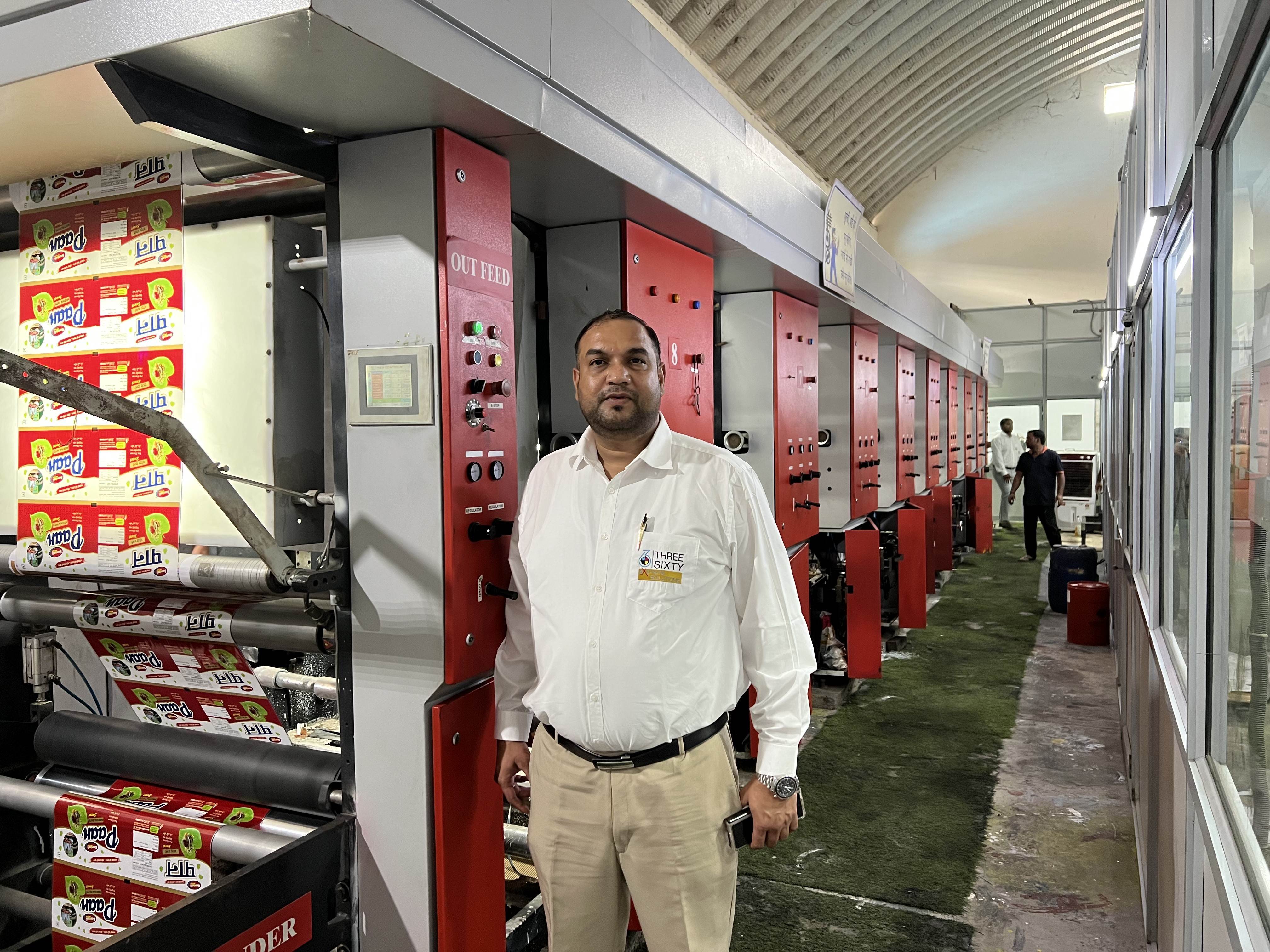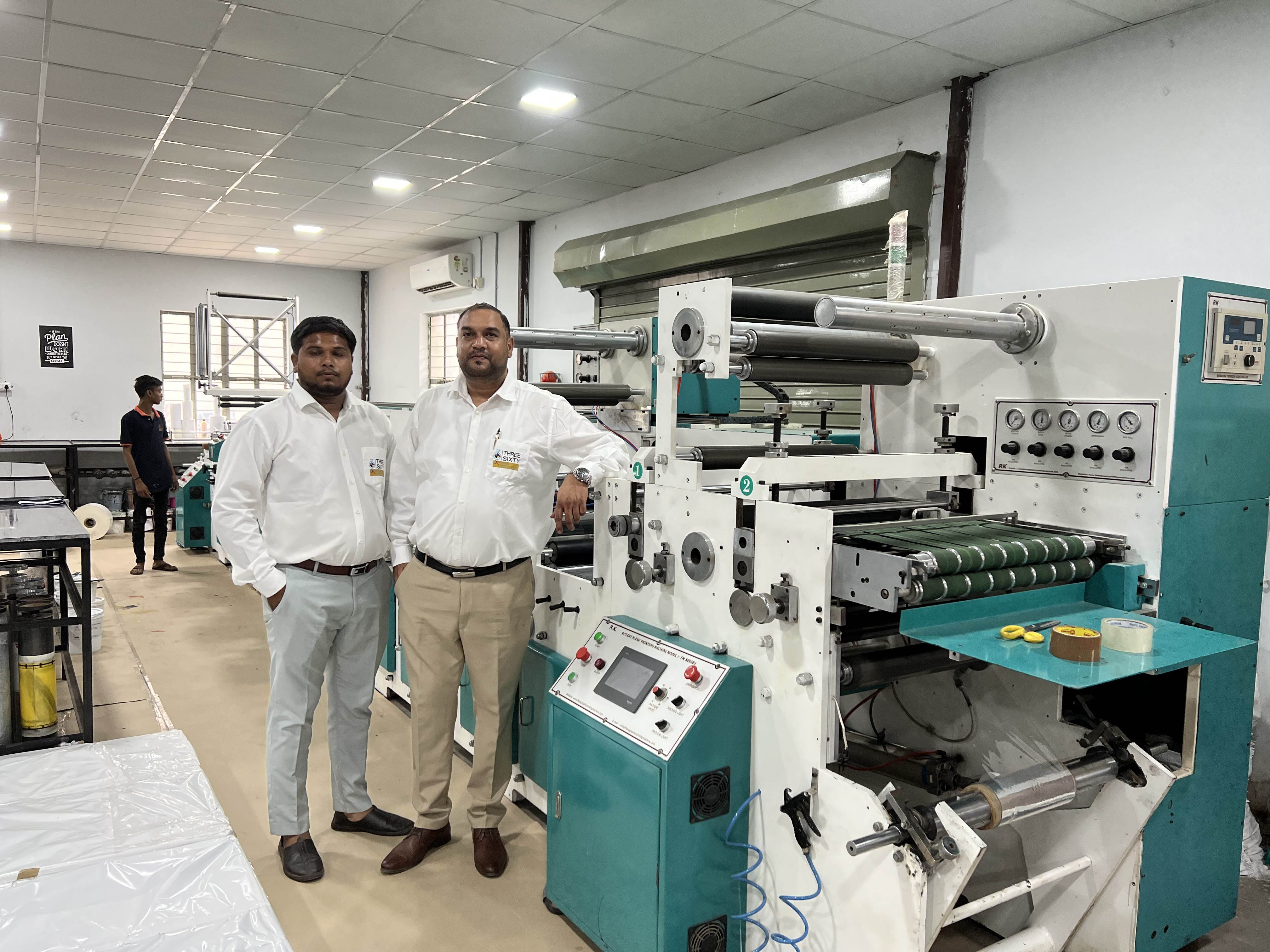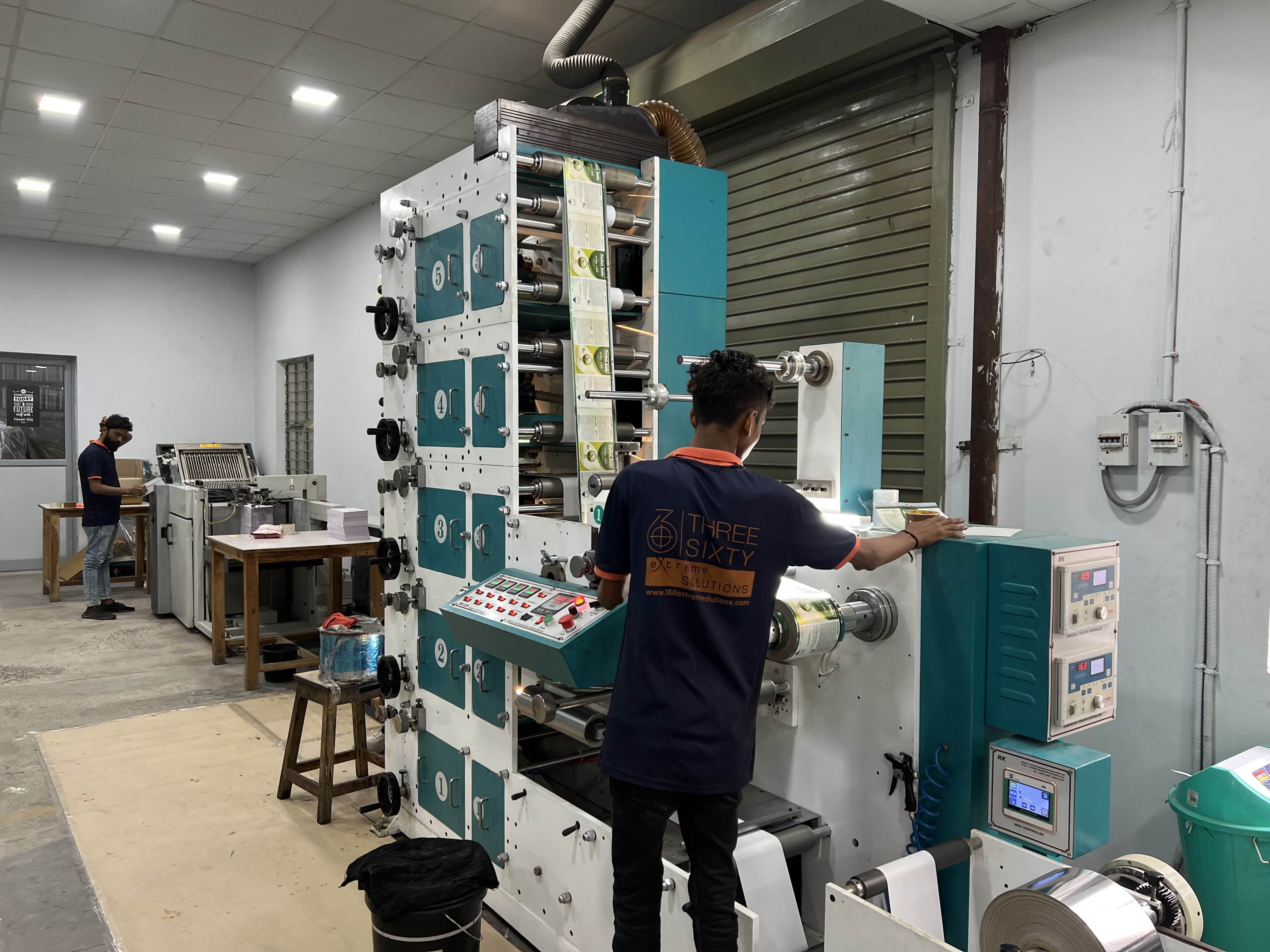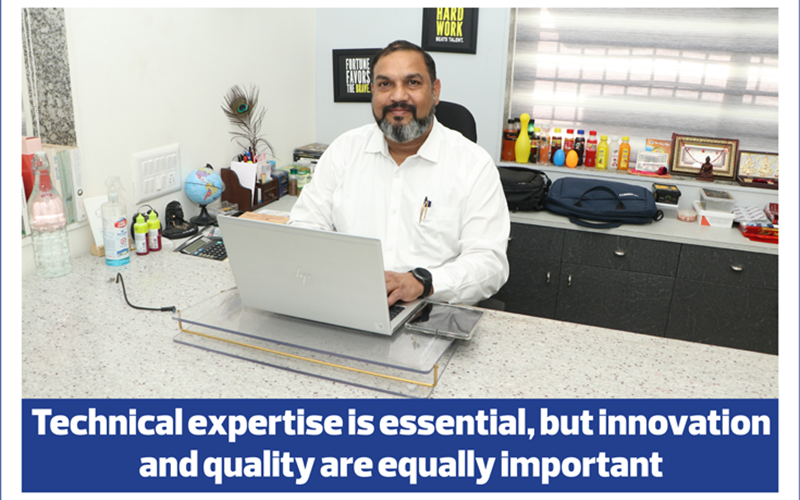Technical expertise is essential, but innovation and quality are equally important - The Noel D'Cunha Sunday Column
Sumit Lad of 360 Extreme Solutions talks to Noel D’Cunha about how recent entrants to packaging overlook ground rules in pursuit of revenue growth
01 Oct 2023 | By Noel D'Cunha
Today, commercial printing is an afterthought in the industry, a business without prospects. Everybody is part of the packaging bandwagon. Is the current state of packaging and label printing similar to commercial printing in the 1990s, with business opportunities, high-profit margins, and a tough market to enter?
Sumit Lad of Moraiya, Ahmedabad-based 360 Extreme Solutions, believes the packaging and label printing industry does share some similarities with the commercial print scene of the 1990s. “There are plenty of opportunities for businesses, and good chances to make money, but it’s not easy to get started, and there isn’t as much competition as you might find in other industries,” he says.
Comparatively less competition, true, but Lad is quick to point out that there’s still a lot of competition. So, to do well, a converter needs to offer something unique and provide extra services to customers.
This will help maintain good profit margins and avoid getting into price wars with other companies,” he says. “To succeed in this industry, we should focus on creating specialised products that are different from everyone else. This will help us stand out and grow our business.”
In short, if a converter keeps an eye on quality and service to stand out and succeed, the packaging and label business can offer opportunities.
According to an article in PrintWeek, India's label market is valued at close to Rs 10,000-crore and continues to grow. According to Future Market Insights, the Indian labels market is anticipated to boost at an 8.9% CAGR, with the pressure-sensitive segment project to hold a major portion of the labels industry.
“To thrive in the industry, technical expertise is essential, but innovation and a commitment to quality are equally important. Instead of producing common products, we should aim to create something unique to succeed in this growing market,” Lad says.

Managing the business
360 Extreme Solutions offers gravure, narrow-web and offset printing services. How does the company manage the three lines of business in terms of cost, quality and market outreach?
Lad says the company follows the same approach in managing gravure, narrow-web, and offset printing, as they share the same raw materials. Deploy the same software to oversee all three lines, the company has automated the processes to streamline management.
360 Extreme Solutions’ fleet of machinery includes two single-colour offset machines from Heidelberg; a five-colour (300-mm) and an eight-colour flexo machine (580-mm), both from RK Printing Company; one eight-colour rotogravure machine; a Rayobi two-colour machine; a cantilever slitting machine; an automatic core-cutting machine; an intermittent rotary punching machine; a solvent-based lamination machine; a gluing machine; two label cutting machines (450-mm and 300-mm); a label inspection with slitter machine; a Polar Microcut cutting machine; two Stahl folder machines and a folding machine from Pratham.
The business model revolves around providing the right product mix to customers at the right price point.
“We aim to meet customer demands and cost considerations effectively. We maintain high standards of quality and service across all our printing services,” Lad says. “We offer customers the flexibility to choose the most cost-effective option based on their requirements. For high-volume, long-run projects, gravure is ideal. Narrow-web or flexo printing may be more suitable for short-run or cost-sensitive projects. We aim to ensure that our customers can bring their products to the market at competitive prices.”
A printer has a relatively easy job profile, but venturing into packaging solutions requires in-depth technical knowledge. It's essential to understand the substrates' performance, shelf life, and behaviour in various weather conditions during transit. Also one has to recommend the right product to customers in order to avoid packaging failures in the market.
He adds, “Our focus is on understanding our customers' needs, delivering cost-effective solutions, maintaining high quality, and staying customer-centric in the dynamic packaging and printing industry. We adapt our approach to cater to various customer requirements and provide the best possible value. Customer satisfaction is key to our survival and success.”

The method at 360 Extreme Solutions
What is the method at 360 Extreme Solutions?
Lad says differentiating oneself as a packaging service provider requires a thoughtful approach. It's essential to educate your customers correctly and provide them with the right advice on how to effectively market their products through packaging and printing. Many printers focus on sales, but it's crucial to educate customers rather than focus on sales.
“By educating our customers on how to showcase their products with the right packaging and printing, you build trust and credibility, he says, adding, “Sales will come naturally when customers see the value you bring. Additionally, consider specialising in niche products to stand out from the competition. When customers consistently find quality and innovation in your services, they will seek you out for their printing needs.”
Besides the customer-centric approach, to control costs and avoid under-pricing, the company maintains optimal inventory levels. This ensures that it doesn’t overstock or run out of essential materials, which can lead to unnecessary costs.
“Additionally, we focus on managing indirect expenses and eliminating wastage. For instance, in gravure printing, we often require multiple sets of printing inks, such as BOPP inks, surface printing inks, reverse printing inks, PVC inks, ethyl-based inks, and ethyl-oil based inks. Managing these inks efficiently helps us control costs. We use ERP software to optimise machinery utilisation, manage inventory, and control costs effectively,” Lad explains. “We also conduct weekly performance review meetings where we discuss and rectify any issues related to machine downtime, which helps in reducing wastage and improving delivery timelines.”
Thus, the company focuses on optimising inventory, automating processes, and reducing indirect expenses. “This approach helps us control costs and benefits our customers. My 25 years of experience has taught me that as a company grows, it becomes even more crucial to manage costs efficiently, and these practices have proven effective in our journey,” he adds.
Quality control
Does it help to have a fixed set of suppliers to ensure quality? Lad concurs. “It’s crucial to have a fixed set of suppliers to ensure consistent quality. The quality of your raw materials and pre-press processes directly impacts the quality of your final product. Changing suppliers frequently can lead to variations in quality, which can disappoint your customers,” he says.
Another aspect of quality is the anti-counterfeiting measures on offer. Lad says printers should focus on niche products and explore various parameters to address counterfeiting concerns effectively. These include sunlight-reactive inks, water-sensitive inks, invisible inks, fragrancing, matte, gloss combinations, and micro-font printing. The goal is to provide customers with solutions that support anti-counterfeiting efforts.
“There are two main approaches: visible and invisible methods. Visible methods can include features like fixed batch numbers or 2D barcodes with algorithm codes. Invisible methods involve the use of special inks that react to specific conditions. Additionally, there are codes that can be scanned to verify authenticity, such as QR codes,” he explains.
Technology selection
Gravure is considered a superior option for flexible printing but it is certainly more demanding - a super-large gravure press running 24/7 in the flexible packaging space. On the other hand, due to the tooling involved, long set-up time, and solvent-based inks commonly used, there are flexo jobs that would prove more expensive if done using gravure technology.
Lad agrees and says that while tooling in flexo can be costly, it uses UV inks, and some ink manufacturers are now developing water-based inks, which can reduce costs. In short-run printing, where you need to minimise cylinder costs and work with a lower minimum order quantity (MOQ), flexo can be a more cost-effective option.
The market is gradually shifting towards shorter print runs. A decade ago, customers often ordered quantities in the range of 100,000 to 200,000 units, but now, these same customers are requesting 10,000-unit value packs. This change in market demand has led to an increase in short-run printing jobs, and flexo printing is playing a significant role in meeting these demands.
“The future market will be dominated by short-run printing,” Lad says. “The focus will be on reducing cylinder costs and lowering the minimum order value (MOV) to cater to the growing demand for shorter print runs.”

And, when it comes to flexo printing, anilox is said to be the heart of flexo printing. How does one go about selecting the right anilox?
Lad says choosing the right anilox is a bit like having your own formula. It depends on the specific needs of your customers and what will yield the best results and quality. If we talk about a basic formula, it involves looking at how many BCM (billion cubic microns) of ink you are using to achieve the desired deposition.
“As a standard in India, a 40% hexagon deposition is commonly used. If you need more than that, you may have to increase your BCM. There are also different types of anilox rolls available with foreign technology, such as hexagonal, hyphen, and slash shapes, which can be used for higher deposition,” Lad says.
He adds, “It's essential to continuously analyse and assess the technical aspects of your anilox rolls. For example, if you need to use metallic inks and require a higher deposition, you’ll need to determine the appropriate BCM. Every printer may have its own approach, but I believe in conducting research and development (R&D) and calculating the required BCM based on the job's specific needs. It’s a combination of science and experience that helps us choose the right anilox.
And how to achieve high opacity (above 85%) whites on a label press?
Lad says it requires a few key factors. First, you need heavy anilox rolls, which play a crucial role in ink transfer. Second, the choice of printing inks. If you need a higher deposit of white ink, consider using brands like Sericol or Siegwerk, which are known for their high deposit capabilities.
“The key is to find the right combination of anilox rolls and ink pressure on your machine. You may need to conduct trials and make adjustments on your machine to fine-tune the ink and anilox settings according to your customer's specific requirements. This way, you can achieve the desired opacity for your white printing. It's a process that involves some experimentation and getting the details of your anilox rolls and inks just right,” he adds.

The cost challenge
According to Lad, the biggest challenges facing packaging converters at the moment are related to cost and credit terms.
He says, in today's market, competition is increasing day by day, which is leading to lower profit margins. Cost management has become crucial for packaging converters to stay competitive. It's essential to analyse and control costs effectively without compromising on quality.
“Another significant challenge is the extension of credit terms. Some industries, like pharmaceuticals and agriculture, often demand credit terms of 90 to 120 days, which can be risky for the packaging industry. Managing cash flow, determining the right amount of credit to extend, and avoiding overexposure to customers are essential aspects of addressing this challenge,” he says.
Lad says it’s important for packaging converters to strike a balance between offering competitive prices, maintaining profit margins, and managing credit terms wisely. Selling at lower costs without considering long-term sustainability can have adverse effects on business viability. Therefore, it's crucial to prioritise quality, service, and cost management while making strategic business decisions.
Why it’s essential to educate the packaging buyers

Lad says, “It's crucial to educate your customers ethically and provide information that helps them make informed decisions. Instead of trying to offer every service, focus on what you excel at and provide detailed, honest information about those areas. Avoid misleading or criticising competitors; instead, emphasise your strengths and how they benefit the customer.
Pros:
- Educating your customers can set you apart in the market and showcase your expertise
- It builds trust and long-term relationships with customers who value your knowledge
- Informed customers make better decisions, leading to more successful projects
Cons:
- Overloading customers with information can be overwhelming and counterproductive
- Sharing too much about your competitors' shortcomings can come across as unprofessional
- Focusing on cost parameters in education might lead customers to choose cheaper options, which could impact your business
Venturing into the packaging and label segment
Lad says it’s never too late to venture into a new industry like packaging and label printing. As the saying goes, “Jab jago tabhi savera.” (morning is when you wake up). However, it's essential to approach this new endeavour with thorough research and preparation. He offers some tips:
- Research: Gain a solid understanding of the packaging and label printing industry, including market trends, customer needs, and technological advancements
- Quality and Service: Focus on providing high-quality products and excellent customer service. These factors are critical in establishing a strong reputation in the industry
- Cost-efficiency: Strive to offer cost-effective solutions while maintaining quality. This can help you attract and retain customers in a competitive market
- Innovation: Stay updated with the latest technologies and innovations in printing. Consider adopting new techniques and equipment to stay competitive
- Niche market: Explore niche markets within packaging and label printing where you can excel and differentiate yourself
- Long-term vision: Have a clear long-term vision and goals for your venture. Building a successful presence in this industry may take time, so patience and persistence are key












 See All
See All